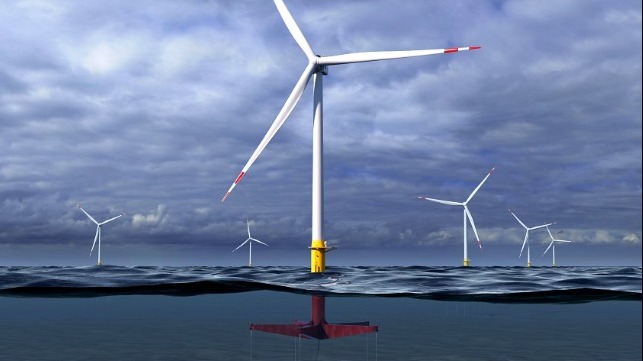UK to Invest $42M in R&D Projects for Deep-Sea Floating Wind Farms

In an effort to maintain its leadership in offshore wind power generation and to further advance the technologies for deep-sea floating wind farms, the U.K. government announced an additional $42 million in grants to 11 projects working on the technologies. The government expects that private industry will match its contribution to drive forward with the technologies needed to place turbines in deep-sea areas where wind strengths are at their highest and most productive for energy generation.
The focus of this program is on the deployment of wind farms in deeper waters than conventional turbines to boost energy capacity in the U.K. Among the selected research projects are projects focusing on areas such as how turbines are moored to the seabed, undersea cabling, and developing foundation solutions adapted to the challenges of the deep-sea locations.
“By stimulating development now through the Floating Offshore Wind Demonstration Programme, the costs of building and locating floating turbines in deep-water areas will come down faster,” said U.K. Energy Minister Greg Hands. He pointed out that the new program is in addition to nearly $250 million the government announced in 2021 for offshore wind saying the effort is “growing the U.K. supply chain and supporting the target in the Prime Minister’s Ten Point Plan of delivering 1GW of energy through floating offshore wind by 2030.”
The largest individual award of nearly $14 million goes to a pioneering installation and O&M technology being developed in a two-and-a-half-year project being undertaken by technology partners SENSEWind, Glosten, and Subsea Micropiles, along with six companies focusing on delivery. According to the companies, the SENSE concept (Self-Erecting Nacelle and Service) “looks to upend the conventional approach to installation and O&M by eliminating the need for special cranes and allowing the full Rotor Nacelle Assembly to be installed and serviced directly on site.”
“The SENSEWind system is designed to scale at the speed of turbine innovation,” said Patrick Geraets, CEO of SENSEWind. “Special cranes and crane vessels will be prohibitively expensive as we attempt to keep levelized cost of energy on a downward trajectory both onshore and offshore. This system solves the looming problem of installing and servicing massive, and increasingly remote, wind turbines. The larger and further from shore the turbines get, the more valuable the SENSE system becomes.”
The SENSE PelaStar project will feature SENSEWind’s turbine self-installation system, the PelaStar Tension Leg Platform floating foundation from Glosten, and Subsea Micropile anchors. The SENSE concept will be demonstrated with a fully operational 2 MW floating wind turbine with installation expected in late 2023.
“Incremental advances based on yesterday’s technology will never get us to our global deployment goals. The pace of innovation at the project development and turbine manufacturer level demands nothing short of a revolution in the supply chain…and visionary leadership to make it happen,” said Julian Brown, wind industry veteran and Non-Executive Director of SENSEWind.
The company’s modeling projects that their concept would reduce the levelized cost of electricity for tall tower onshore wind by up to six percent and floating offshore wind by up to nine percent. The demonstration project is designed to test and confirm the technologies and its benefits at the Scottish project location, slated to be the Kincardine test site off the coast of Aberdeen.
The other large government grant goes to Copenhagen Offshore Partners, SSE Renewables, Maersk Supply Service Subsea, and Bridon Bekaert Ropes Group to develop and demonstrate new mooring system technologies, cable protection, floating turbine base design, and an advanced digital monitoring system.
Other projects that will receive funds from the new government program include projects focusing on developing and testing electric cabling systems, a system designed to support substation equipment connecting floating wind farms to the energy grid, an articulated wind turbine column designed to reduce construction, installation, and maintenance costs, anchoring system that will secure floating turbine cables to the seabed and a trimaran mounting system for wind turbines. One of the projects focuses on wave energy seeking to develop a floating foundation with a small footprint and integrated wave energy generator.
